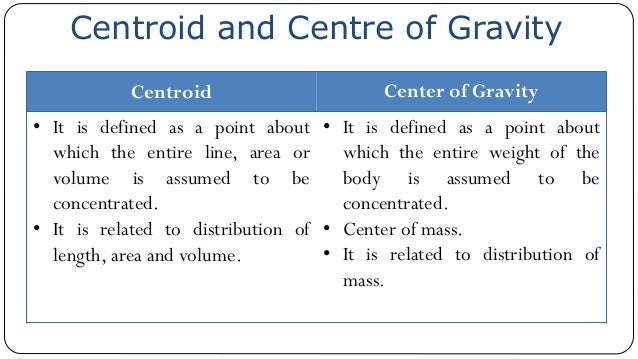The Centroid & CM are both the same? or different? Most people mistakenly consider both to be the same as in most cases they are but when the object is non-homogeneous the centre of Mass & geometric centre aren't the same.
So what is the effect of these two things? Is it really a significant thing to worry about? This depends on your implementation & purpose of using the object. For an instance suppose, I have a boat & I need to design it from scratch.
I'll design the boat, make the drawings & get the work done by the carpenters or any labour skilled in getting the thing done. Now, let's go back with the geometry, it would basically include the dimensions of the structure or here, the boat. Now if I was to estimate the mean position of all the particles that form the structure, then this will be called as the centroid of the boat or the structure. It is the geometric centre of the particles that form the object. But, the weight of the boat or structure may not be on the same point as the density of the elements that form the structure may not be uniform & may deviate the centre of mass from the centroid.
So, in plain words:
Geometric centre is the centroid, it is the point where the mean position of all the particles constituting the object can be found.
Centre of Mass is the point where the entire mass of the object is supposed to act. If the object is homogenous i.e. the density is uniform throughout then the Centre of Mass & Centroid may coincide else they'll be different.
Now, depending on the gravity, the centre of mass is often referred to as the centre of gravity but on a condition that gravitational force is uniform else this entity is also found to differ from the other two.
Where are these concepts useful & why should we even care about them?
The solution to this question can be correlated to a lot of examples from nature but I could better explain by an example of designing a structure. Generally, to simplify calculations, the elements are considered as line elements instead of their complex 3D nature. A column would be considered as a verticle line & a beam would be considered as a horizontal line, in general, all 3D elements would be translated into their corresponding & simplified 2D versions. The forces in these elements are assumed to work along the centroid & the centre of masses. This assumption simplifies the calculation & makes it possible to design complex structures.
Now, how do centroid & centre of mass influence the design procedure?
I was learning about the design of precast elements & found that people often consider the determination of the centroid in order to find the position of the lifters safely hoist the elements such as columns, girders, spandrels, walls, etc. I was of the opinion that the centre of gravity should be considered but later realized that as the elements are of concrete & generally homogenous the CM & centroid are the same. Also, as the hoisting forces could be adjusted by men the centroid & centre of mass (CM) could be artificially brought in line while lifting to avoid roll-over while erecting, so here the difference is not an issue.
Here the difference in CG, CM & centroid affects the system.
Lets remove the human adjustment from the frame of reference & let nature interact with the objects that humans have designed. Suppose we've built a house that has to float on water and should remain stable without turning over.
When the centre of Gravity & the centroid is the same, then the object is stable & would not over-turn as the buoyancy force would balance it because of the symmetric mass distribution & displacement.
But when the centre of gravity & centroid isn't the same, then the object many over-turn.
Please note that during the course of this post I've used the centre of gravity & centre of mass synonymously as I've assumed that gravity is uniform throughout the surface of the earth but if not then both the two things mentioned before are to be treated differently.
The above-mentioned post can be better understood from the presentation below:
Thanks for reading...
-Sayyed Shadaab
